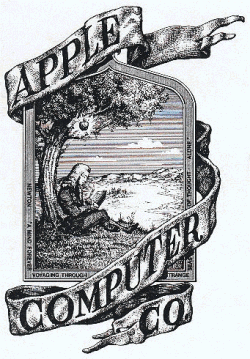By James O.
The modest beginnings of Apple as the pet project of Steve Wozniak and Steve Jobs working out of Jobs’ parents’ garage is well-circulated industry lore. But the tale of the two Steves, about the events that launched Wozniak and Jobs into their esteemed positions in the annals of computer industry history often omits the brief tenure of the third co-founder of Apple, Ronald Wayne, the young company’s self-described “adult in the room.”
Ronald Wayne first met the Steves during his time at Atari, then only a company for three years. Wayne had arrived in Silicon Valley in the 1970s after working in the gaming industry in Nevada building slot machines. He was 41 years old, over two decades older than Steve Jobs, when he wrote the founding contract for the Apple Computer Company. The partnership agreement granted Wozniak and Jobs 45% each of the company’s stake and 10% for Wayne. Wayne, a self-trained engineer with a failed slot machine business venture behind him, brought administrative experience to the company. He helped to facilitate business decisions between Wozniak and Jobs. Also tasked with providing documentation for forthcoming Apple products, Wayne authored the manual for the Apple I and illustrated the first Apple logo. The logo depicted a 19
th century-style etching of Isaac Newton seated under an apple tree that evoked the company’s innovative spirit.

Wayne’s involvement with Apple’s early ventures wasn’t without qualms. His previous entrepreneurial failures left him wary of getting involved in another start-up that could leave him in more debt. Jobs opened a $15,000 line of credit, placing legal responsibility on the three members of the nascent company. And unlike the twenty-something Jobs and Wozniak, Wayne had assets that he did not want creditors to seize. Wayne was also suspicious of Steve Jobs’ ruthless attitude. In a 2013 interview, he explained, “If you had your choice between Steve Jobs and an ice cube, you’d nuzzle up to the ice cube for warmth.” Above all, Wayne’s passion did not lie in business management or document writing, but rather in engineering, a role that was mostly taken up by Wozniak at Apple. With these apprehensions quickly bubbling, Wayne decided to leave Apple just twelve days after it was formally brought into existence, selling his 10% stake in Apple for a meager $800.
Wayne now lives in Pahrump, Nevada, retired and spending his days collecting and selling rare coins and stamps, and still spending time at the casino in front of his beloved slot machines. He wrote a memoir in 2011 entitled
Adventures of an Apple Founder. He did not own an Apple product until that year when he was gifted an iPad which he quickly re-gifted to his son, who showed him how to use it. In 2014, Wayne sold his Apple archive at a Christie’s auction for $25,000.
The lot included proofs of the Apple 1 manual that he penned, designs for the Apple II case, and other ephemera and documentation. Apple is now one of the largest technology companies in the world, the first publicly traded American company to ever be valued above $1 trillion. If Wayne had held on to his 10% of Apple, he’d be a multi-billionaire, but when asked if he’d do it differently, Wayne expressed no regrets. “I’ve never regretted my decision for one moment,” he said in an interview with Canada’s
Global News. “If I had stayed with them through the Apple Corporation phase, I would probably would have wound up the richest man in the cemetery.”